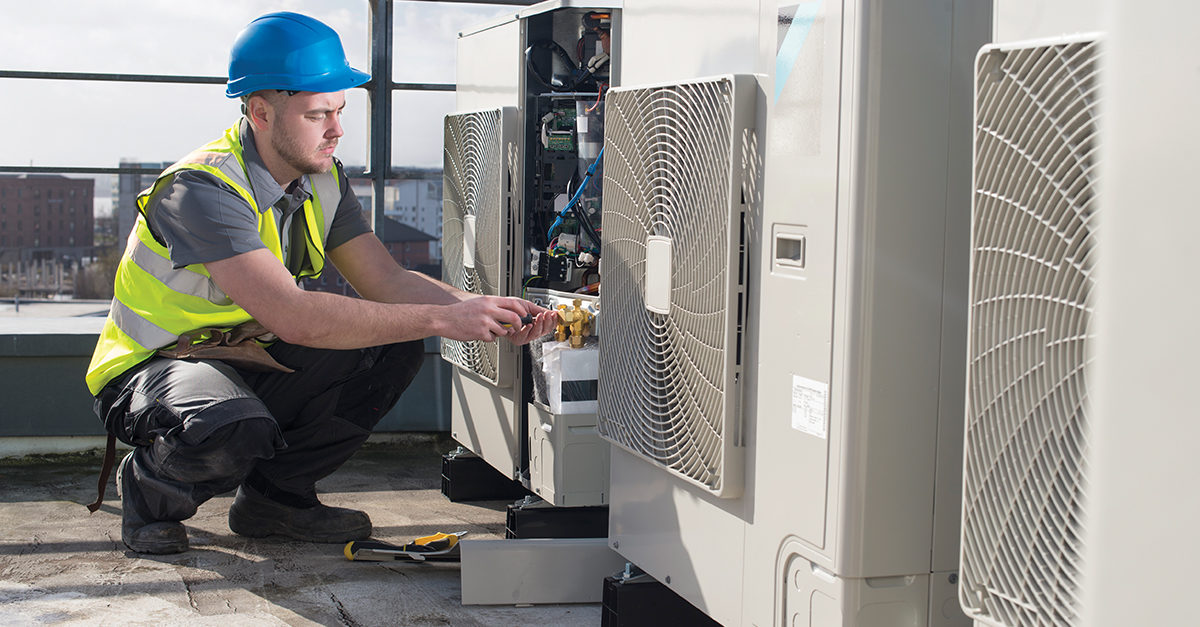Protecting personnel and facilities from unseen bacteria and fungi is a daunting task for building managers as well as professional cleaning teams. Industry researchers developed antimicrobials to destroy disease-causing microbes, the most common of which are antibiotics, which target bacteria. Recently, however, there has been antibiotic and antimicrobial resistance, or the ability of microbes to resist the effects of drugs. Although several antimicrobials have been generated to target these microbe germs, most are not killed and continue to grow.
Most commonly, bacteria-ridden organisms can live and be spread through a facility’s HVAC system, making commercial buildings at higher risk for the spread of diseases like Legionnaires’ disease. The bacterium, known as Legionella pneumophila, is a concern for everyone in a building because the disease cannot be detected until people get sick.
So what does this mean to building managers and commercial cleaning crews? It is difficult enough for facility managers to operate a building and keep tenants comfortable and happy without having to deal with the risk of fungi and bacteria affecting personnel. It is imperative that a facility manager, who is responsible for the operation of a building’s HVAC system, is educated about this danger. In 2015, the American Society of Heating, Refrigerating, and Air-Conditioning Engineers (ASHRAE) developed a new standard, ASHRAE 188, designed to prevent the growth and spread of Legionella. Here are five steps facilities can take to mitigate Legionella risks:
1. Recognize the most common places to find the bacterium. Two of the most common locations where Legionnaires’ disease-causing bacterium can be found are in cooling towers and large central air conditioning systems. The reason for this is that the bacterium likes to multiply in standing warm water, causing the disease to infect people when they breathe in contaminated vapor. Buildings like hotels and hospitals, where people gather in large numbers and make heavy demands on heating and cooling systems, are breeding grounds for this disease.
2. Put preventative maintenance measures in place. Building managers and others who have control over HVAC systems are major lines of defense against the spread of this disease. According to the U.S. Centers for Disease Control and Prevention (CDC), between 8,000 and 18,000 people in the United States are hospitalized each year with Legionnaires’. Although antibiotics can control this condition, as many as 30 percent of people who contract Legionnaires’ disease can die from it. Stopping the disease from ever happening is not likely, but taking preventative measures can play a big part in preventing Legionnaires’ disease from taking a foothold.
3. Watch for the warning signs. Legionnaires’ is a severe form of pneumonia characterized by headache, high fever, chills, cough, chest pain, and shortness of breath. It is not spread from person to person. Most people exposed to the Legionella bacteria do not become ill, but the elderly, smokers, and people with chronic lung disease or weakened immune systems are more vulnerable.
4. Determine if you should perform routine testing. The water management team should consider whether testing must be performed. Testing is not required, but is recommended by ASHRAE 188. The management team should determine the frequency, location, and plans for the testing.
5. Develop a plan if Legionella is found. If you test and find Legionella, you should have a plan in place to remove the bacteria from the system. Facility managers should have all personnel evacuate the building and shut down the HVAC system. Environmental technicians suited in specialized protective garments and personal protective equipment will have to enter the building and disinfect the HVAC system.
While some people are at greater risk than others, no one can completely avoid the risk of antibiotic-resistant infections. Infections with resistant organisms are difficult to treat, and require costly and sometimes toxic alternatives. By creating a framework for proactively managing building water systems and reducing the potential for Legionella growth in these systems, building and facility managers can prevent many, but not all, cases of legionellosis.




